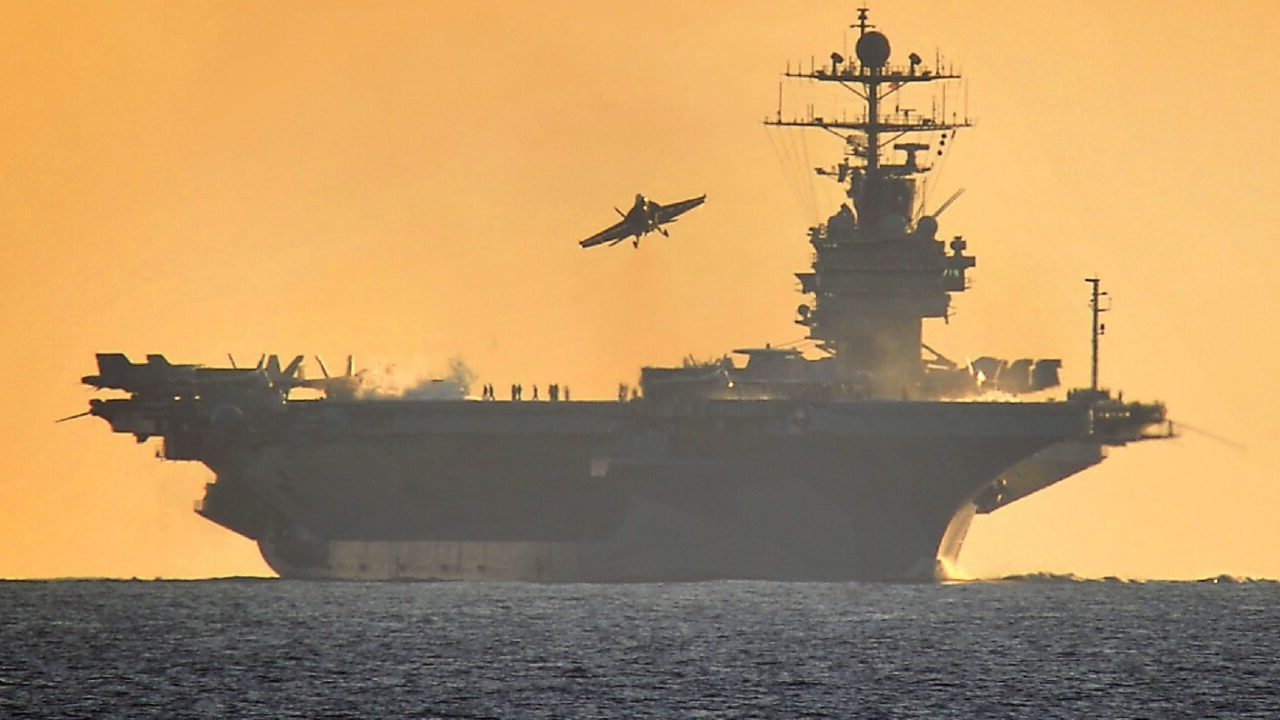Aircraft carriers fighting alongside drone ‘warships’? US Navy aircraft carriers may be deploying alongside unmanned vessels by 2027 or 2028 — or “earlier, if I can” make it happen, Adm. Michael Gilday, the service’s top officer, said in February.
Those drone warships “may not necessarily be completely unmanned,” but that timeline would allow the Navy to “crawl-walk-run” and have those unmanned systems available “in large numbers” by the 2030s, Gilday said, pointing to the recently activated unmanned task force as a key part of that effort.
“We’re doing sprints with this unmanned task force to challenge and sometimes fail so that we identify and know when we need to pivot and where we need to double down,” Gilday told reporters in San Diego.
The accelerated timeline shows how much work the Navy has done with unmanned systems and its dedication to making them what Gilday called a “trusted and integral part of the war fight.”
Unmanned aircraft
The Navy has operated smaller drone aircraft, such as the Scan Eagle and RQ-21, from its warships for years.
The MQ-8B, an unmanned helicopter, has been in service for over a decade, and the MQ-8C entered service in 2019. They mostly operate from guided-missile frigates and littoral combat ships to conduct targeting and intelligence, surveillance, and reconnaissance missions.
The Navy and Marine Corps are both in early testing of longer-range shore-based drones, working with the MQ-4C and MQ-9A, respectively.
The most anticipated asset, however, is the MQ-25 aerial-refueling drone, which will be the first carrier-based drone in service.
An MQ-25 refueled an airborne F/A-18 for the first time in June 2021 and conducted non-flight testing aboard the aircraft carrier USS George H.W. Bush — its first test period aboard the carrier — in December.
The MQ-25 is designed to carry 15,000 pounds of fuel — enough for two aircraft — about 500 nautical miles, allowing it to extend an F/A-18’s operating range by 300 miles. The drone will free up manpower and take over the refueling mission from F/A-18s that were assigned that role.
The extended range will also help the Navy counter the threat of long-range anti-ship missiles. Navy officials say the MQ-25 may take on ISR and strike missions in the future.
The Navy plans to acquire 72 MQ-25s and hopes to have them operating on carriers by 2025.
Unmanned vessels
The Navy also wants to develop and procure three types of unmanned surface and undersea vehicles: the Large Unmanned Surface Vehicle (LUSV), Medium Unmanned Surface Vehicle (MUSV), and Extra-Large Unmanned Undersea Vehicle (XLUUV).
Based on commercial designs, LSUVs are expected to be 200 to 300 feet long and displace 1,000 to 2,000 tons fully loaded, putting them on par with a corvette. They are meant to be low-cost, high-endurance ships that can be reconfigured for strike and anti-ship missions, with anywhere between 16 and 32 cells for vertical-launch missiles.
MUSVs are to have a similar design but smaller size, coming in at 45 to 190 feet long and displacing around 500 tons — roughly the same as a patrol vessel. They are intended to conduct ISR and electronic warfare.
LUSVs and MUSVs may occasionally require small crews as their technology and operating concepts are worked out.
XLUUVs will have a diameter of more than 84 inches, making them too large to be deployed from a submarine. The Navy has said that the XLUUV will “accommodate a variety of large payloads,” but its size, range, and endurance mean it will have to be launched from a pier at a forward operating location.
The Navy is looking at the XLUUV to be a deployment vehicle for Hammerhead naval mines.
The LUSV and MUSV programs are using prototypes made by the Defense Department’s Strategic Capabilities Office and the Defense Advanced Research Projects Agency.
In 2020, six contracts totaling more than $41 million were awarded for industry studies on the LUSV, while L3 Technologies received a $34.9 million contract to build a MUSV prototype, with an option for eight more.
In 2019, Boeing was selected to build five XLUUVs based on its Echo Voyager. With a standard length of 51 feet, the Echo Voyager can accommodate a 14-foot or 34-foot payload section. It has a range of 6,500 nautical miles.
Move fast, fail fast
Despite the complexity and sheer number of systems, the Navy is making progress in developing and integrating unmanned vehicles and the components needed to operate them into the fleet.
The Navy is preparing to fit four aircraft carriers with upgrades related to Project Overmatch, the naval contribution to the US military’s Joint All Domain Command and Control program. Project Overmatch is meant to link the sensors on Navy surface ships and aircraft, giving them a common operating picture.
In February, the Navy concluded the International Maritime Exercise 2022. Led by US Naval Forces Central Command, it was the largest maritime exercise in the Middle East — with 50 vessels from more than 60 countries — and the largest unmanned exercise in history, with 10 countries operating more than 80 unmanned vehicles.
Performance issues have made lawmakers wary of the Navy’s unmanned systems, but Gilday said the Unmanned Task Force is meant to speed their development, allowing the Navy to scale the effort up in the next several years.
“What we’re trying to do is move very fast and — almost like the Google approach — fail fast if we need to,” Gilday said. “It’s a lean task force, but we have put some of the best minds in the unmanned area against these problem sets.”
Benjamin Brimelow is a reporter at Business Insider.

